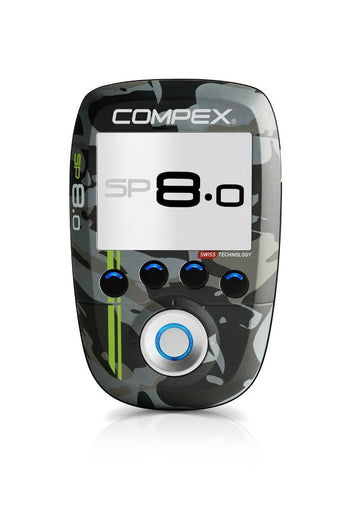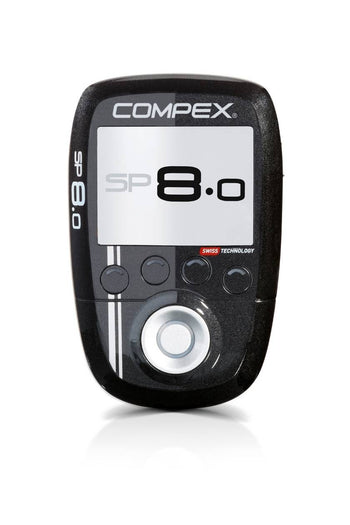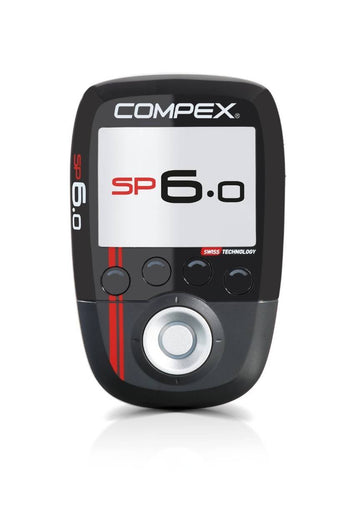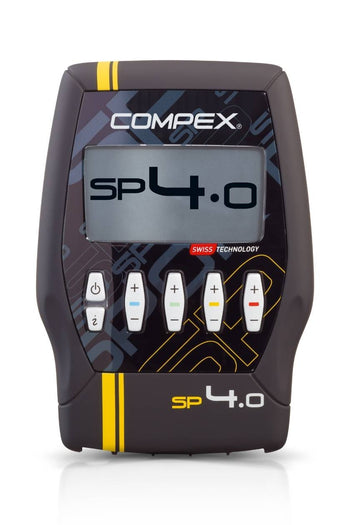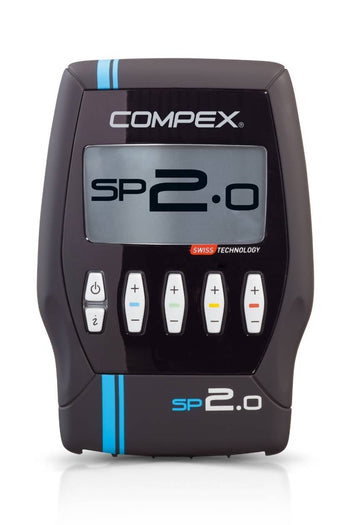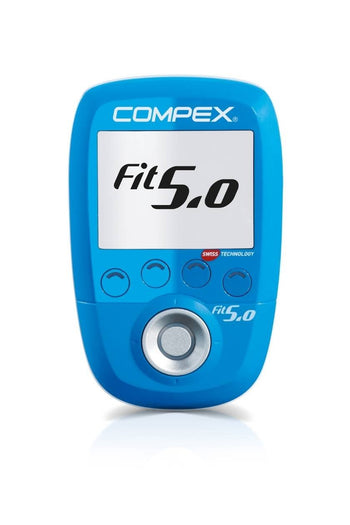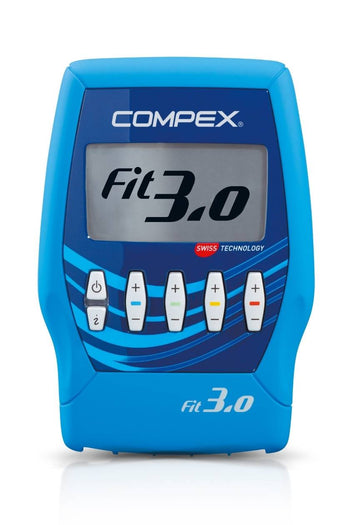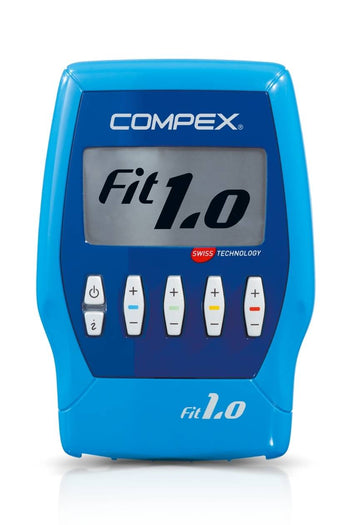Popular Products
Compex Electrical Muscle Stimulation (EMS) Clinical Studies
Electrical muscle stimulation (EMS) is now a recognised technique and its effectiveness has been confirmed by numerous scientific publications. Some of these studies have been carried out in partnership with Compex and highlight the effectiveness of EMS.
Clinically Proven Compex EMS Products
1. IS HIGH-FREQUENCY NEUROMUSCULAR ELECTRICAL STIMULATION A SUITABLE TOOL FOR MUSCLE PERFORMANCE IMPROVEMENT IN BOTH HEALTHY HUMANS AND ATHLETES?
Author/s and Publication: Gondin et al., European Journal of Applied Physiology, Oct 2011, Vol. 111(10), pp.2473-87.
In this French study, the authors reviewed the literature with the purpose of giving an overview of the benefits and limitations of electrical muscle stimulation (EMS) in healthy individuals, recreational and competitive athletes.
EMS training results in significant increase of muscle strength.
When EMS is combined with dynamic voluntary exercises, it can also improve sport specific skills and performance, like jump performance, sprint ability.
EMS is an interesting training tool for athletes, because during electrical stimulation the ‘fast-twitch’ muscle fibres can be activated more easily at lower force levels, whereas during voluntary exercise these fibres are usually recruited for higher power levels.
EMS appears as a method of choice when the time available for strengthening program is limited and also it provides diversity and variability in the training program, which might enhance athlete's motivation.
The authors conclude there is compelling evidence that electrical stimulation is a relevant and efficient complement to voluntary resistance training protocols for muscle strength improvement, with knee extensor maximum voluntary contraction increasing by up to 27% and muscle volume increasing by 8% after 8 weeks. It is also a legal complement for athletes (e.g. as compared to doping procedures).
2. EFFECTS OF COMBINED ELECTROMYOSTIMULATION AND GYMNASTICS TRAINING IN PREPUBERTAL GIRLS.
Author/s and Publication: Deley et al., Journal of Strength and Conditioning Research, Feb 2011, Volume 25(2) pp.520-526.
Strength training is an important training aspect in gymnasts because of the high explosive efforts that are required.
In this French study, a Compex Sport device was used to investigate the effects of a 6-week combined electrical muscle stimulation (EMS) and gymnastic training program on muscle strength and vertical jump performance of prepubertal gymnasts.
16 young female gymnasts were randomly divided into two groups: one group received EMS training of the knee extensors in addition to the gymnastic training, and the other group (control group) received gymnastic training only.
After the first 3 weeks of EMS training there was a significant increase in muscle strength of the knee extensors as well as jumping performance, whereas the control group showed no changes in the same parameters.
The improvements in jump ability were still maintained 1 month after the end of the EMS training program.
The authors suggest integrating short-term EMS strength training into the training of young gymnasts, for strength and jumping ability improvements.
3. EFFECTS OF AN ELECTROSTIMULATION TRAINING PROGRAM ON STRENGTH, JUMPING, AND KICKING CAPACITIES IN SOCCER PLAYERS.
Author/s and Publication: Billot et al., Journal of Strength and Conditioning Research, May 2010, Vol. 24(5), pp. 1407-1413.
In this French study, a Compex Energy device was used to investigate the effect of a 5-week electrostimulation (EMS) training program on muscular strength (Quadriceps), kicking velocity, sprint, and vertical jump performance in soccer players.
20 male soccer players were randomly divided into two training groups: one group (EMS group) received EMS on the quadriceps muscles during 5 weeks (3 sessions of 12 minutes per week) and soccer training, the other group (control group) only had the soccer training.
On the Compex device the ‘Strength’ program was selected at level 5.
The athletes were tested after 3 and 5 weeks training and at both assessments, they showed significant improvements in Quadriceps muscle strength parameters as well as in ball speed performance, while these improvements were not seen in the control group.
The authors recommend the use of EMS to complement traditional training for soccer, as it appears to be a viable means for improving force and specific soccer tasks. It can also infuse variability into the training program, which might enhance the motivation of some players.
Furthermore, the authors also recommend its use for injured athletes to attenuate or eliminate de-training effects.
4. COMPARISON OF SWIM RECOVERY AND MUSCLE STIMULATION ON LACTATE REMOVAL AFTER SPRINT SWIMMING.
Author/s and Publication: Neric et al., Journal of Strength and Conditioning Research, Dec 2009, Volume 23(9) pp. 2560-2567.
Competitive swimming requires multiple bouts of high-intensity exercise, leading to elevated blood lactate. Active exercise recovery has been shown to lower lactate faster than passive resting recovery but may not always be practical.
This Californian study aimed to evaluate the effect of active recovery with electrical stimulation versus submaximal swimming recovery and passive resting recovery.
Blood lactate levels were tested before and immediately after a 200yrd swimming sprint, as well as after 10 min (‘mid-recovery’) and 20 min (‘post-recovery’) of recovery.
At both recovery assessments, blood lactate levels were most decreased with the submaximal swimming recovery method. However electrical muscle stimulation recovery also produced significantly better lactate reduction compared to resting recovery.
Therefore the authors propose electrical stimulation as an alternate recovery treatment for the purpose of lowering blood lactate. There may be situations in which the athlete has limited access to a pool, or is physically or psychologically exhausted and not motivated to continue to exercise, or simply seeks an alternate recovery treatment. In these situations, using electrical stimulation to produce muscle contractions while otherwise resting may be of benefit in helping reduce muscle and blood lactate before subsequent performance.
5. ELECTROMYOSTIMULATION TRAINING EFFECTS ON NEURAL DRIVE AND MUSCLE ARCHITECTURE.
Author/s and Publication: Gondin et al. Medicine & Science in Sports & Exercise, 2005, Volume 37(8) pp. 1291-1299.
With electrical muscle stimulation being largely employed as a means of strength training, the authors of this French study wanted to investigate the adaptations that occur in the muscles and nerves that are subject to electrical muscle stimulation.
Therefore they divided 20 subjects into an electrostimulated group and a control group. The EMS group received an 8-week EMS training program of the quadriceps muscles with a Compex Sport device.
Maximal muscle strength was increased with 27% after 8 weeks of EMS training – while no strength gains were noted in the control group.
On the neural level, the authors found that EMS training enhanced the overall activity of the stimulated muscle: the motor nerves are able to activate more muscle fibres with EMS.
On the muscle level, EMS training produced increased quadriceps muscle mass (measured by cross sectional area of the muscle) and changes towards a more efficient muscle architecture.
Neural adaptations occurred mainly during the first 4 weeks of training, while muscle adaptations became significant between 4 and 8 weeks of training.
It was concluded that the strength gains with electrical muscle stimulation training are associated with neural as well as muscular adaptations.
6. EFFECT OF THREE DIFFERENT BETWEEN-INNING RECOVERY METHODS ON BASEBALL PITCHING PERFORMANCE.
Author/s and Publication: Warren et al., Journal of Strength and Conditioning Research, March 2011, Volume 25(3), pp. 683-688.
In baseball (and also other sports), in order to consistently perform at the highest level during competition, recovery of the muscles in the rest periods in between high performance innings is important.
In this Californian study, the authors compared the effectiveness of three forms of recovery in order to determine which one was most effective after an inning of pitching in baseball:
1. Passive recovery: no activity for 6 minutes.
2. Active jogging recovery: 6 minutes jogging.
3. Active EMS (electrical muscle stimulation) recovery: 6 minutes ‘active recovery’ programme with Compex Sport of the arm and shoulder muscles.
The active electrical muscle stimulation recovery with the Compex Sport produced the highest reduction in blood lactate levels as compared to the other recovery methods which had no significant effect on blood lactate. Reduction of blood lactate allows for the recovery of the muscle, which should allow for better performance in the subsequent pitching activity.
It was indeed measured that pitching speed following NMES recovery was higher compared to pitching speed after jogging recovery.
Psychological measurement showed that subjective, perceived recovery was also better after the Compex versus jogging recovery session, which may also potentially contribute to an increase in pitching performance during the next inning.
The authors recommend electrical muscle stimulation as the recovery method of choice for baseball pitchers because of superior blood lactate clearance and better self-reported recovery.
Additional Source Material & Claims
1. Claim: Improve your Endurance. Improve your Vo2 max by 7% by using EMS (6 weeks).
Study: Neuro-Muscular Electrical Stimulation Training Enhances Maximal Aerobic Capacity in Healthy Physically Active Adults.
Author/s and Publication: Domenico Crognale, Louis Crowe, Giuseppe DeVito, Conor Minogue, Member IEEE, and Brian Caulfield, Member IEEE
2. Claim: Recover Faster. Up to 3x more blood circulation in a stimulated muscle with Compex use.
Study: Augmentation du débit artériel fémoral sous électrostimulation neuromusculaire de la jambe.
Author/s and Publication: Zicot M, Rigaux PF, 1996
3. Claim: Recover Faster. Reduce your blood lactate concentration with Compex use.
Study: Effects of Three Recovery Protocols on Range of Motion, Heart Rate, Rating of Perceived Exertion, and Blood Lactate in Baseball Pitchers During a Simulated Game.
Author/s and Publication: Courtney D. Warren, David J. Szymanski, Merrill R & Landers J. Strength & Conditioning Research July 2014
4. Claim: Improve Muscle Strength. Explosivity improvement of up to 15% after 5 weeks.
Study: Human skeletal muscle: Phasic type of electrical stimulation increases its contractile speed.
Author/s and Publication: Karba R, Stefanoovska A, Dordevic S, 1990
5. Claim: Improve Muscle Strength. Vertical jump improvement of up to 14% after 4 weeks.
Study: The effects of electrostimulation training and basketball practice on muscle strength and jumping ability.
Author/s and Publication: Maffiuletti NA, Cometti G, Amiridis IG, Martin A, Pousson M, Chatard JC, 2000
Use the Compex Product Selector
Looking for your ideal Compex product?
Let us help you find your perfect Compex product. Our product selector will help you find the best device to suit your needs.
All you need to do is answer a few questions and the product selector will do the rest.

